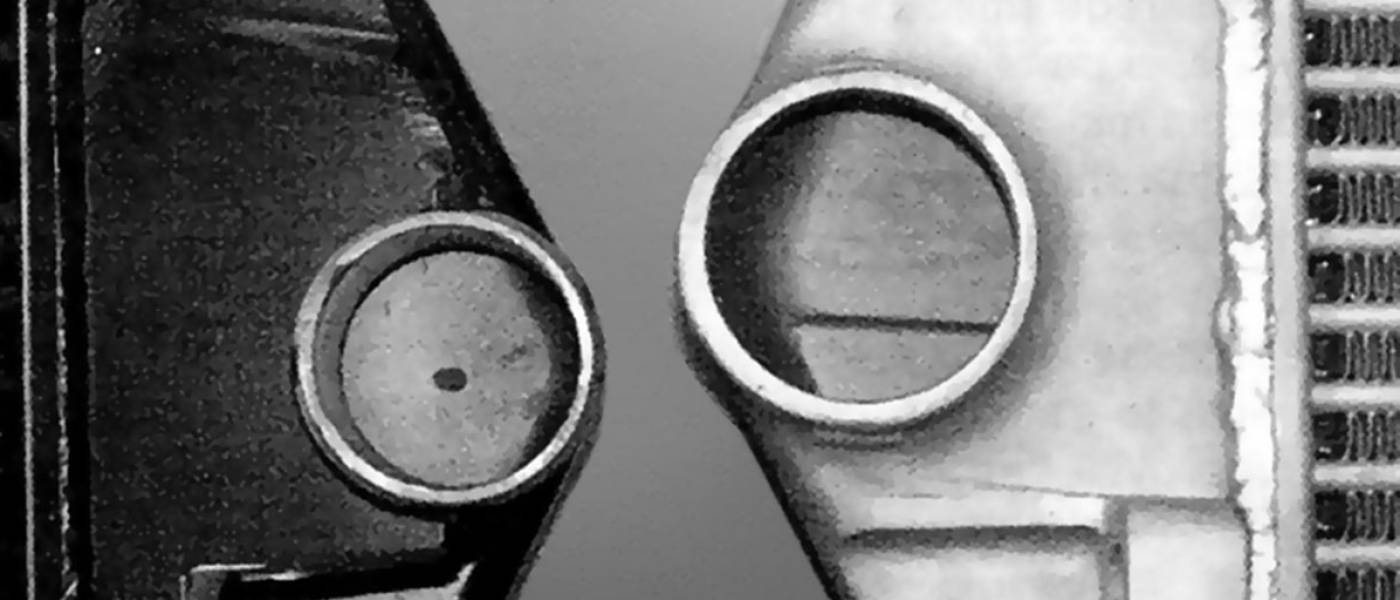Banks’ Intercooler For Third Generation Trucks
Turbo Diesel Register Issue 48
When Banks Engineering came out with an intercooler for the Third Generation trucks my first thought was, “Why?”
Peter gave me a tour of their product development department. I am always amazed at the ever-changing landscape within that department. I’ll tell ya, I felt like a kid in a candy store. The staff at Banks looks like they are having so much fun. Why didn’t I listen to my mother and study harder in school? I too could be working on all those cool parts and pieces on a daily basis.When Banks Engineering came out with an intercooler for the Third Generation trucks my first thought was, “Why?” I called Banks and arranged for an interview with Peter Treydte. Peter is Director of Technical Communications for Banks Engineering.
Regarding the intercooler, Peter explained the whole deal to me. After his doing so, everything was perfectly clear. Now I will attempt to clarify the “why” for you. The long and short of it is this: the larger the surface area of the intercooler the greater the cooling effect on the pressurized (read: boost) intake air that is coming from the turbocharger to the intake manifold. Cooler intake air equates to lower exhaust gas temperatures. Performance-wise, the lower EGTs allow the owner to increase the fuel rate. More fuel, more power and higher EGTs. The higher the EGTs, the greater the need for cool intake air. Cooler air plus more fuel equals more power. Get the picture?
Concurrent with the release of Banks’ Intercooler for the Third Generation truck comes word from ’03 to ’05 Turbo Diesel owners that the intercooler for these trucks has been changed. In what looks to be a cost-cutting measure, the intercooler is no longer a one-piece metal housing/cooling fin-type unit. The ’03 to ’05 intercooler uses plastic end caps that are stitched onto the cooling fins. This design has caused concern from those in the performance community. Time will tell how well the plastic end cap units will hold up to higher levels of boost pressure as customers make modifications to their engines.
So, there are two reasons to consider the Banks intercooler. However, rather than fret about a problem that may never occur, let’s focus on the performance application of the intercooler and do a test to prove the product’s merit.
As you can see in the photos, the inlet (and outlet–not pictured) of the Banks intercooler are considerably larger than stock. Unlike the stock cooler, which has very abrupt turns, the inside transitions of the Banks unit are smooth and clean.
For the test results the test truck is a bone-stock, ’04, 3500, single axle, 4×4, automatic, 3:73 gears, Quad Cab. The truck has the 305/555-rated engine. I did a baseline run on Banks’ Mustang dyno. I then installed the Banks intercooler and made additional runs on the same dyno. Without getting too techie on ya, here are the results. By installing the Banks intercooler I was able to lower the exhaust gas temperature (EGT) by 50 degrees. Based on the lower EGTs I was able to increase fueling (with the help of a box). I increased the fuel until the EGTs were back up to the stock baseline. This equated to a 10% increase in horsepower and torque. Now, let’s take a look at the numbers. A stock configuration on the dyno produces 240 horsepower and 440 of torque. Installing Banks’ intercooler allowed me to increase the fueling, hence, increase EGTs back to the original stock numbers. Doing so increased the horsepower to 264 and the torque to 485. Wow, what a concept. I wonder what would happen if I were to add an exhaust system? How about an intake or an air box that is restrictive? Based on the premise that more air allows one to add more fuel, I know we have a winner here.
Sign me up, I want one. Banks continues to bring new and innovative products to the marketplace. This may be a good time to mention that many automotive products have evolved from lessons and hardware used at the racetrack. This product is no exception. Banks continues to lead the pack in product research and development. The day Peter gave me a tour of the R&D department I saw a glimpse of the future. Their teams of professionals were working on the first “Endurance Diesel Truck” to be campaigned in the National Auto Sport Association (NASA) endurance races against the likes of Porsche, Mercedes, and Audi. To my dismay, the truck was not Cummins-powered, but rather a Duramax-powered GM product. However, the point is that Banks is out there pushing the limits. I also examined the Cummins-powered, Bonneville streamliner. The expectation for the streamliner is to set a class record by exceeding 300mph at Bonneville. They will also be returning to Bonneville with their Cummins-powered Sidewinder, which set a World Land Speed Record a couple of years ago at 222mph. Ford (with partner Roush Racing as the developing entity) will be challenging Banks’ record. So the Sidewinder will return to Bonneville looking for speeds in the 240mph range. We all owe Gale Banks a great deal of gratitude. He and his fine company are one of the main reasons we are enjoying our dearly beloved Dodge Cummins trucks and the aftermarket products that have followed.
The new Banks Intercooler will be offered as a “stand alone product” for those that wish to add aftermarket items one at a time. Or, for the “I want it all and I want it all now” crowd, Banks will offer the intercooler bundled with their famous PowerPack®. I have gone through the pick-n-choose phase of upgrades. I prefer to go the route of the “I want it all now crowd.” Let someone else use his or her beloved truck as a proving ground. I will wait and purchase a proven product from a time-proven company such as Banks Engineering


